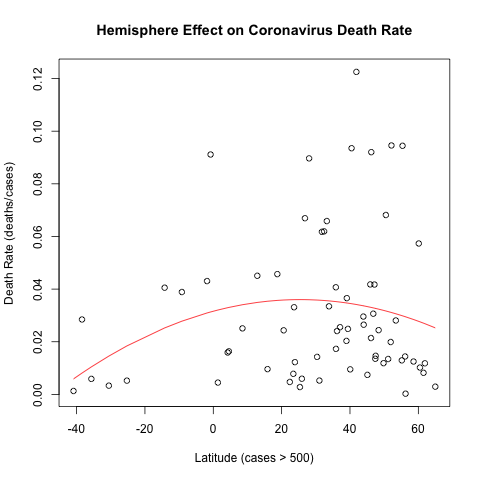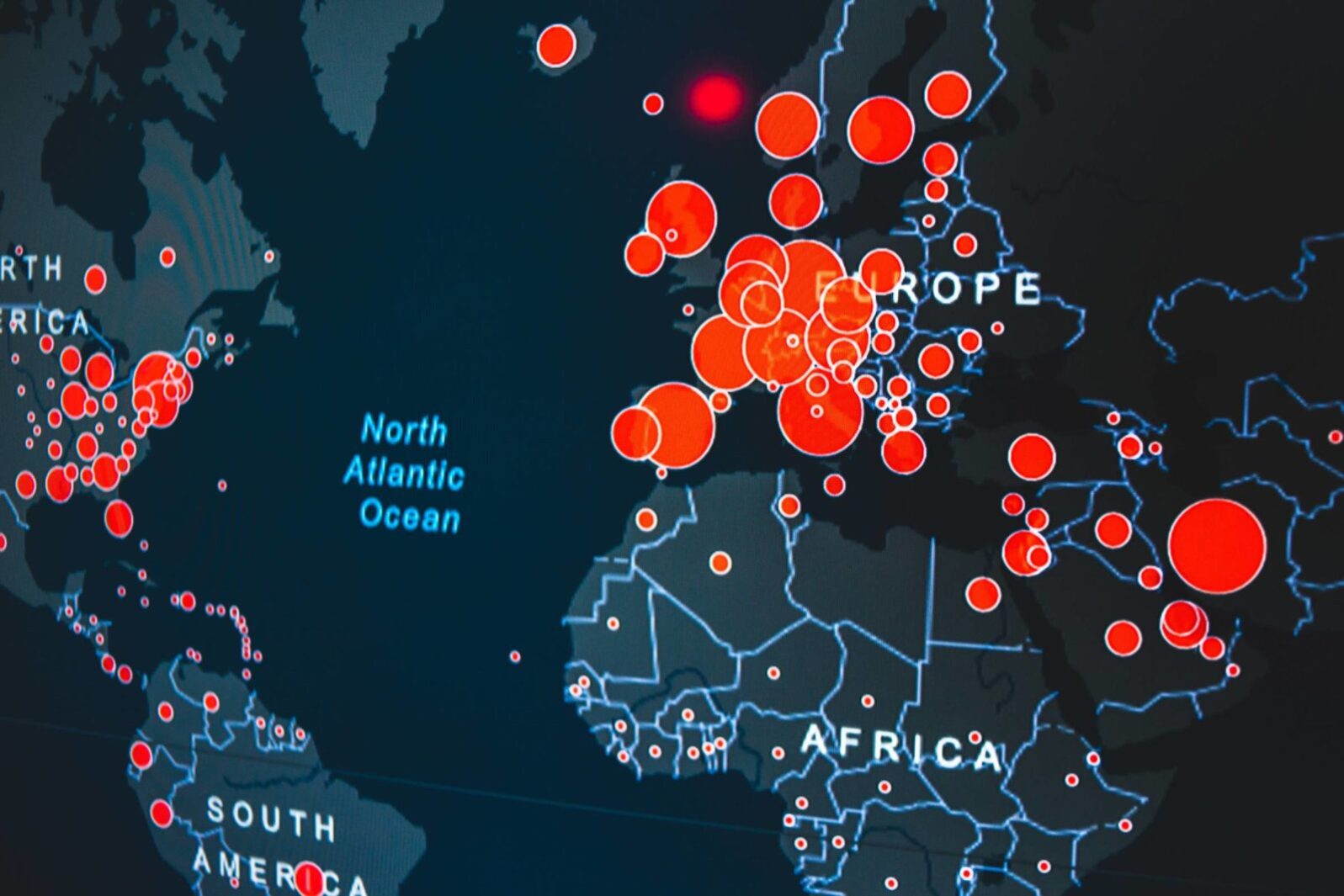Why Does COVID-19 Target the Northern Hemisphere?
A graph of death rates by latitude is revealingLike the grim reaper, COVID-19 is menacing the world, bring economies to a standstill and pushing the “free countries” to adopt the tactics of authoritarian regimes. Originally promised to last only a few weeks, the lockdowns are drawing into potentially months. A further concern has arisen; there may be multiple waves, as happened with the Spanish flu, where the second and third waves were even more deadly. If COVID-19 is a pandemic, there seems to be no escape.
But, is it really a global pandemic? If you’ve been watching the news, you might notice that some areas of the world are oddly absent from the reporting. Wouldn’t we expect the disease to rip through the most densely packed and least developed countries? Instead, the virus has mostly shut down some of the most advanced nations, which in turn only represent a small portion of the world’s population. How can we explain this oddity? Well, let’s look at a graph of covid-19 death rates by latitude:

The graph above was generated from data I took from the Google front page statistics for coronavirus cases and deaths on April 4. The materials used in creating the graph are here. Countries were matched to their latitudes and countries with fewer than 500 cases were removed from the dataset. The result shows a best fit quadratic curve. It turns out, the quadratic curve has a much greater statistical significance than a normal linear regression.
First of all, COVID-19 clearly does not attack the globe uniformly by latitude. The second standout feature is that it targets the northern hemisphere. This is bizarre. How can a disease’s spread be affected by hemisphere, let alone latitude? That is not a statistical fluke because the graph comprises 198 different countries and the best fit quadratic curve parameters have statistical significance scores of 0.12, 0.07 and 0.0000016 for the x^2, x and c components respectively.
What was the big difference between the hemispheres when the data was pulled? Due to the northern hemisphere bias of much of the internet, many information seekers will overlook the fact that it is nearing the end of summer in the southern hemisphere.
How could that affect the COVID-19 death rates? The disease virus is a variant within the same group as cold viruses and the cold virus is destroyed by heat. Is COVID-19 vulnerable to heat? It is worth asking whether that explains the lower mortality rate near the equator and in the southern hemisphere. At any rate, given how little we know about COVID-19, we should acknowledge the unknown unknowns before drawing firm conclusions on the subject.
Further reading on COVID-19:
Post-COVID, five ways your job could change This is a good time to be a creative thinker and innovator.
Many COVID-driven innovations will likely endure, whether it’s vets doing telehealth, trolls harassing Zoom users, or cybercriminals targeting remote workers, the new opportunities and risks will stay with us. (Denyse O’Leary)
COVID-19: Getting to the bottom of what happened in China: China knowingly violated the terms of a World Health Organization (WHO) disclosure agreement. It is widely recognized that medical professionals and journalists in China are being silenced if they publish any information about COVID-19 that contradicts the ruling Chinese Communist Party’s official narrative. But now mainland Chinese scientists must ensure that their research publications also toe the CCP party line. If we sift carefully, however, we can uncover real information. (Heather Zeiger)
and
COVID-19: When 900 bytes shut down the world. A great physicist warned us, information precedes matter and energy: Bit before it. The COVID-19 virus contains about as much information as a sticker in WhatsApp. Walter Bradley Center director Robert J. Marks and Dr. Daniel Andrés Díaz-Pachón explore a dreadful truth: “Human biology is so finely tuned that less than a kilobyte of information can stop the world.”
